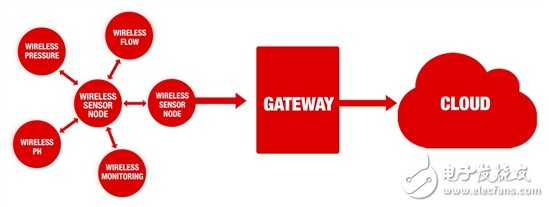What do you need to know from the Industrial Internet of Things (IIoT)?
This blog post was written by Matthieu Chevrier and Giovanni Campanella.
These days, every day, the Industrial Internet of Things (IIoT) reports on the benefits of process automation or factory automation. When we talk to industry stakeholders, integrating sensors into the data warehouse and the challenges of network security are likely to delay the most critical aspects of IioT's rapid growth.
To understand the challenges that IIoT faces when integrating sensors into a data warehouse and find ways to overcome these challenges, let's go back and see what the Internet and the World Wide Web are so successful. Although the World Wide Web first came out in the 1950s, its development was very slow and limited to university research and defense applications. But when TIm Berners-Lee defined the following three principles that made the Internet possible, everything changed:
What did you get: HTML.
Where to get what you need: URL.
How to get information: HTTP.
This innovative approach to thinking has driven the first two waves of the Internet, Web 1.0 and Web 2.0. As shown in Figure 2, as a third wave, in Web 3.0, data can be produced and used by machines; when a machine can operate and respond to web content, it is basically IIoT.

Figure 2: The 3 Ages of the Internet
To help our users find solutions for IIoT, we decided to take a look at how TIm Berners-Lee implemented Web 1.0 and realized that we actually only need to have three elements and demonstrate a sensor integration into the data. An example in the warehouse.
More specifically, we re-use the architecture of web 1.0:
What you got: industrial data collection.
To make these industrial-grade methods available, we decided to bring the industry's highest accuracy, resolution, power, and cost structure design to market.
Where do you get it: wireless sensor nodes.
In order for these wireless sensor nodes to be available, we decided to connect the sensor to the multi-purpose wireless link.
How to get it: Gateway.
To make this gateway available, we decided to make it easy for users to access this data through a gateway; these gateways are highly flexible and easily connect to existing network infrastructure or connect through one of our cloud partners.

At TI, we have these three elements, but the three are not combined. We decided to bundle them together and released the Wireless pH Sensor Emitter (TIDA-00561) reference design and demonstrated it with a Bluetooth® Smart Gateway. At the 2015 Nuremberg Automation Show, we had a demonstration in the booth.
This design has a pH front end with a standard connection for pH probes; laboratory test performance data in the pH range of 0-144 with an overall accuracy of +/- 0.01 pH to ensure processing and instrumentation needs compatible. The form factor and electrical connections of this reference design are compatible with the TI SimpleLinkTM multi-standard CC2650 SensorTag ecosystem, allowing you to create a wireless sensor node. A simple firmware upgrade is enough to choose wireless connectivity technology: Bluetooth® Smart, ZigBee® or 6LoWPAN.
Once you've chosen wireless connectivity technology, you can use a suitable gateway to run a system analysis that can be transmitted over Ethernet, or run a wireless local area network (WLAN) for cloud analysis with one of our cloud partners.
By creating and connecting TIDA-00561 or a wireless thermocouple sensor transmitter designed for the SensorTag reference, you can easily build a network and take advantage of the Bluetooth ecosystem for development. Later, it is easier to switch to different radio protocols because the TI Gateway and TI SensorTag support other networks while keeping the rest of the data link unchanged, thus speeding up the real progress of the IIoT.
Other resources
Review the following reference designs:
Industrial grade pH sensor.
Wireless thermocouple sensor transmitter.
Energy harvesting adapter module for thermoelectric generators.
Build your own ecosystem with a gateway for Bluetooth® Smart, 6LoPAN or ZigBee.
Download the SensorTag software:
All In One Portable Solar Power System
All In One Portable Solar Power System,All In One Solar Generator,Max Portable Solar Power Generator,Portable Solar Panel Array
Shenzhen Sunbeam New Energy Co., Ltd , https://www.sunbeambattery.com
